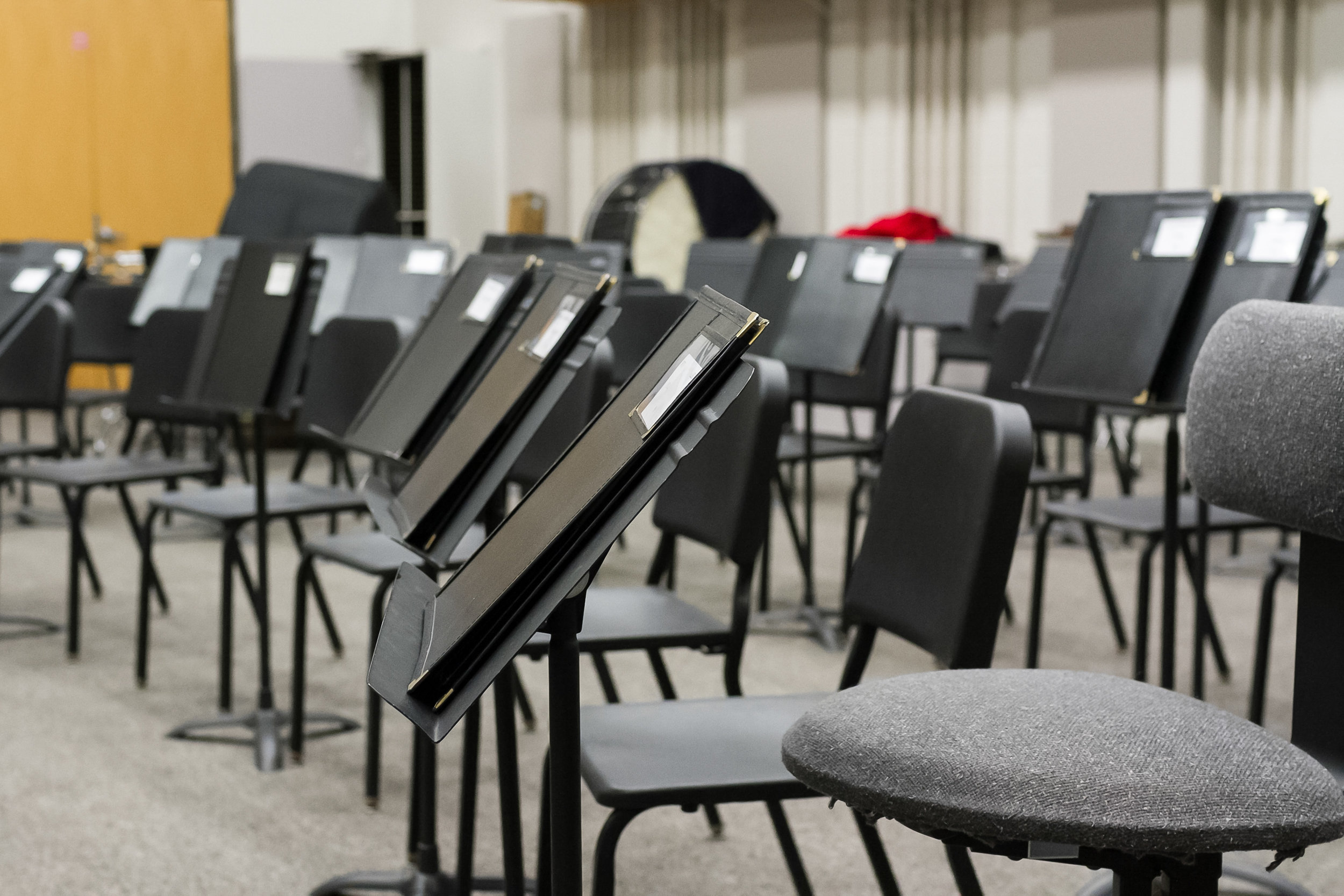Do you ever feel like teaching is more like herding cats? I have been there. The beginning of my teaching career I had 600 students in my program 6th-8th grade. 280 or so of them were beginners. Talk about herding cats. I was straight out of college, in a very small/cramped band room, and in desperate need of a classroom management system.
Find a System that Works for You and Your Program
Out of necessity as well, as the safety of my students, came a classroom management system that worked very well for me. There was a lot of trial and error and I got advice from mentors and colleagues, but eventually, I figured out a system that worked for us. The key is… developing a classroom management system that works for your program. The tips below worked for my program, but you may need to choose the ones that work for you and adapt them for your situation.
Create a routine for your students
Once you establish your classroom management system is going to look like, then the key is practicing it and sticking to it. Soon it will become routine for your students, and then all you have to do is teach. I really have found that it is that simple. In over 20 years of teaching middle school, I can count on one hand how many times I had to write up a student, refer them to an administrator, or assign a detention.
Build a Positive Learning Environment
Your students will buy into the system once they understand why it is needed, experience the results, and take pride in the program and their performances. It may take practice and explanation to help them understand the need for it, but it will happen…I promise.
Consistency is key
There is no one way to organize and run a classroom, but it is important to make decisions in a few key areas. Below are some of those areas and some suggestions to get you started.
ENTERING THE ROOM
Have the room set up, neat, and in order before the students walk in.
Teacher / staff should be present when students enter.
Be clear and CONSISTENT about how to enter the room and your rules of the classroom.
START OF CLASS
Be very specific about how and when to unpack
Unpacking procedures should be instrument specific (i.e. - small instruments at their seat and large instruments near the lockers.)
Decide if you want students to play before class starts. (For my classes and especially for beginners, they were instructed not to make a sound on their instruments until instructed to do so.)
I have background tracks from their method book playing on the stereo. As each student was ready, they were to “air play” along with the recording until everyone was ready at the start of class.
Once all students are set, I stop the recording and start class.
DURING REHEARSAL
Have the rehearsal plan for the day on the board
The rehearsal plan will include the daily warm-ups, book lines, music for the day, as well as any reminders they need.
Utilize staff as much as possible to keep all students on task.
If you are on the same page musically, they can also team teach with you and engage students individually as necessary.
Pacing of the rehearsal is very important to the studentʼs motivation, educational development.
REHEARSAL PROCEDURES
Instill correct rehearsal procedure with a consistent approach each day.
Have a system in place for everything and communicate to your students clearly what those rules and expectations are.
All students should be actively involved at all times during rehearsal.
When rehearsing sections, be careful not to neglect other students for long periods of time (ex. percussion). This only encourages misbehavior.
“Air playing” can be beneficial to the students as well as the director. This will allow the students to go through the musical passage without playing out loud. Again, keeping students engaged.
Instill correct rehearsal procedure with a consistent approach each day
Praise the students often for exhibiting correct rehearsal procedure and proper behavior - Positive reinforcement motivates the students
Rehearsals should be disciplined, but students can still have fun!
KEYS TO SUCCESS
Like most things worthwhile, this will take time and constant focus. With some key adjustments, you will likely see some immediate benefits, but will not have the "perfect" classroom. Take note of the successes and keep working towards that goal for your benefit as well as the benefit of the students. Keys to the success of any plan you implement are:
Consistency
Clear Instructions
Reminders about rehearsal procedures
Pacing and keeping students engaged
Positive reinforcement
Balance between routine and variety
High expectations
Commitment from director and students




